Last Chance to Catch NYC's Holiday Notalgia Train
We met the voices of the NYC subway on our nostalgia ride this weekend!


Opened in 1854 by Irish immigrant John McSorley, McSorley’s Old Ale House stands as one of the oldest operating taverns in the United States. Patrons of this storied institution can only choose between two drinks: Light or Dark Ale. Despite this, or maybe because of it, McSorley’s has been incredibly popular since it opened over 160 years ago.
Today, the sawdust-covered floors of this East Village establishment have many secrets to share, from early 20th century memorabilia to its association with rock icons and prominent political figures.
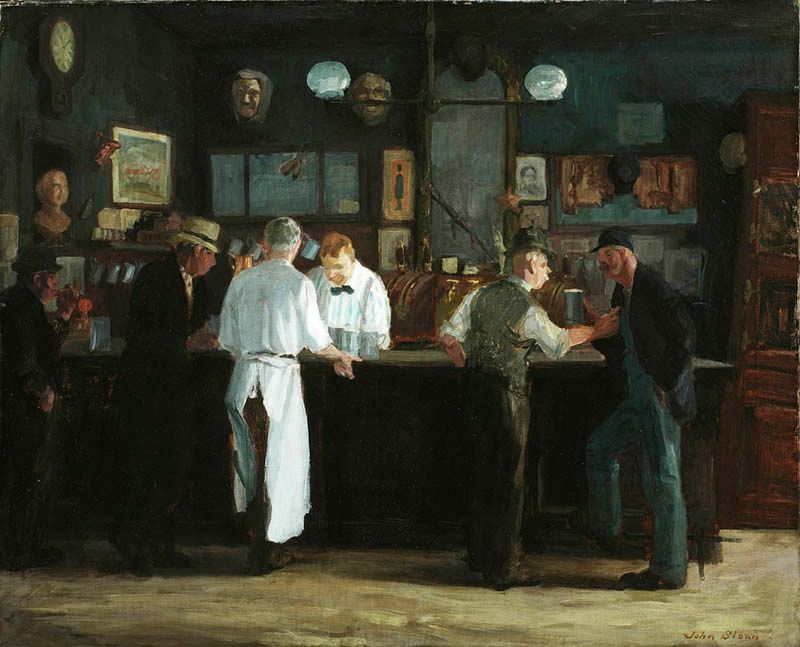
McSorley’s has been open since 1854, and managed to stay so because, at one time, it operated as a speakeasy. The iconic mugs that McSorley’s ale is served in today are a vestige of the Prohibition era when the bar would serve “near beer” (beer with little to no alcohol content) to most patrons.
According to legend, bartenders would step on a special pedal to fill the mugs with the real deal to longtime customers. McSorley’s managed to avoid legal trouble because many of Tammany Hall politicians drank there throughout Prohibition. Throughout these years, American painter John Sloan also famously created a series of still life paintings of McSorley’s, such as the one above.
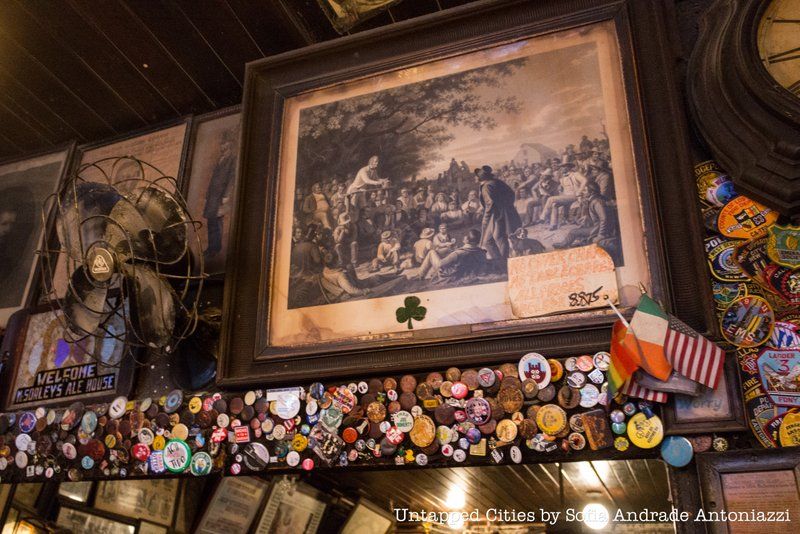
In 1910, John McSorley — or Old John, as he was affectionally called — passed away at the age of 83 on the second floor flat of the bar. When John’s son Bill took over the bar, he refused to remove any of the paintings, clippings, and artifacts that his father, a memorabilia enthusiast, had put on the walls. They remain up there to this day as a shrine and in memory of McSorley’s founder. Customers can also find an invitation to the opening of the Brooklyn Bridge!
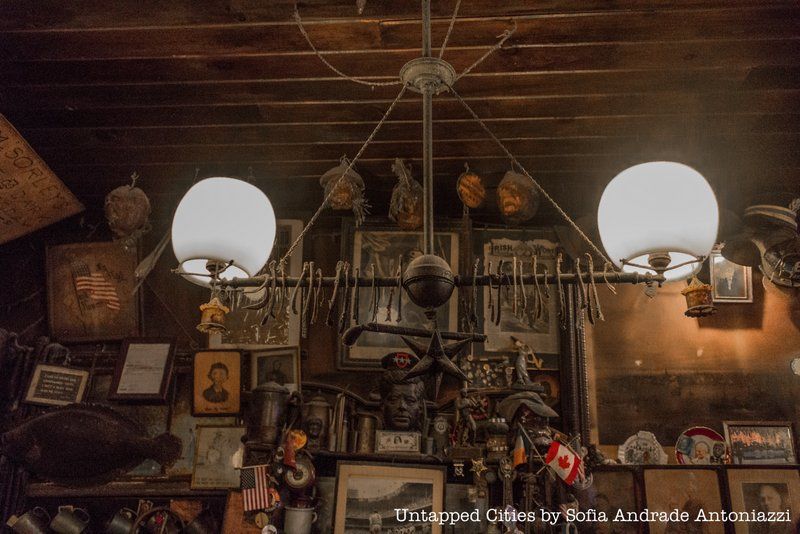
On the former gas chandelier that hangs in McSorley’s, you’ll find wishbones left by soldiers leaving for World War I. Soldiers who eventually returned would collect their wishbones, so the ones that remain were left by the fallen. The tradition has actually continued, with wishbones of those who went to Iraq and Afghanistan. Matthew Maher, who has worked at McSorley’s since 1964 and the third in his family to run the bar, told the New York Times in 2011 that the tradition actually began during the Civil War.
The wishbones look pretty spick and span at this time, as they get regularly dusted due to pressure from the NYC Department of Health and Mental Hygiene. But prior to that, they had been left in situ, gathering thick layers of dust (as you can see in this New York Times photograph). Maher saved the dust in a container and keeps it in a container at his home in Queens, a sacred memoriam to the lost soldiers.

McSorley’s was one of the last men’s only businesses in New York until 1970, when it lost a discrimination suit on June 26th of that year. Even after being forced to let women in, it wasn’t until 1986, 16 years later, that the bar installed a ladies restroom. Old John believed that men were incapable of drinking in peace with women around.
In fact, Dorothy O’Connell Kirwan, who owned the bar from 1940 until 1974, never entered the bar during business hours, even after it allowed female customers. The first woman to work behind the bar was Teresa Maher de la Haba in 1994. She is the daughter of Matthew Maher, who was a night manager at McSorley’s and eventually went on to purchase the establishment from the Kirwan’s son, Danny.
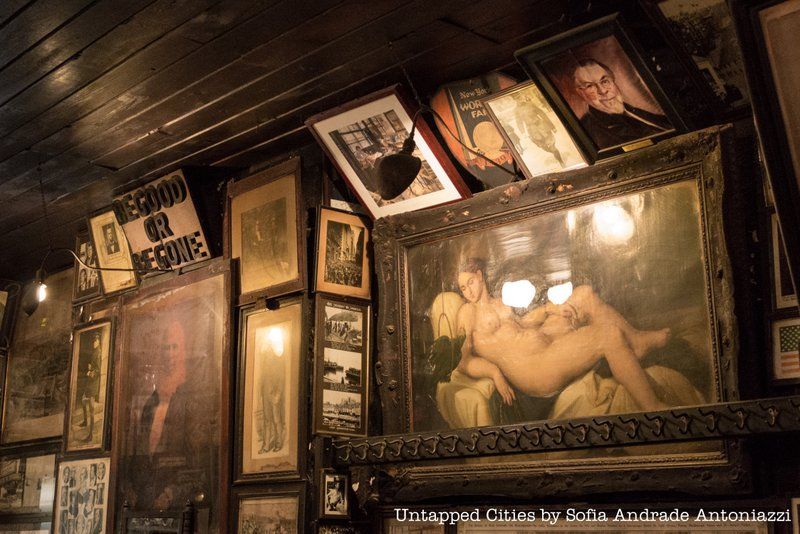
The slogan is pretty straightforward: the wooden sign above the bar at McSorley’s says “Be Good, or Be Gone,” reflecting the institution’s resistance to change over the years (ex: no women policy). The house favorite bar snack was also (and is still) a sleeve of crackers, sliced cheese and raw onions. Spicy mustard on the tables, combined with the raw onions, was a sure way to clear your sinuses and get awful breath.
Although the salt from the crackers and the thirst incited by the onions may just be a way to get patrons to drink more, there are countless stories of Old John eating onions like they were apples.
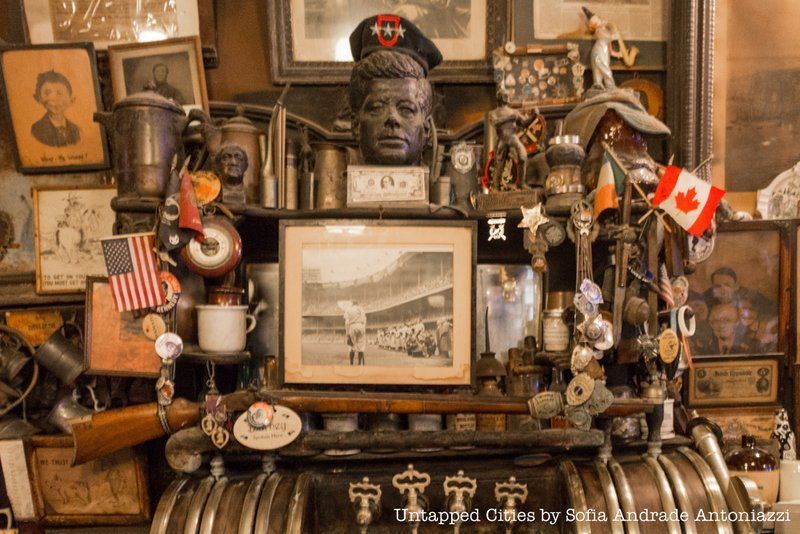
When the pub first opened, John McSorley named it after his favorite pub at home in Ireland. Old John escaped the famine, and opened “The Old House at Home” in New York City. No one called the pub that, however. All referred to it as McSorley’s instead. In 1908, two years before Old John McSorley died, a storm blew the sign off the façade of the building. When John ordered a new sign, he renamed the place “McSorley’s Old Ale House.”
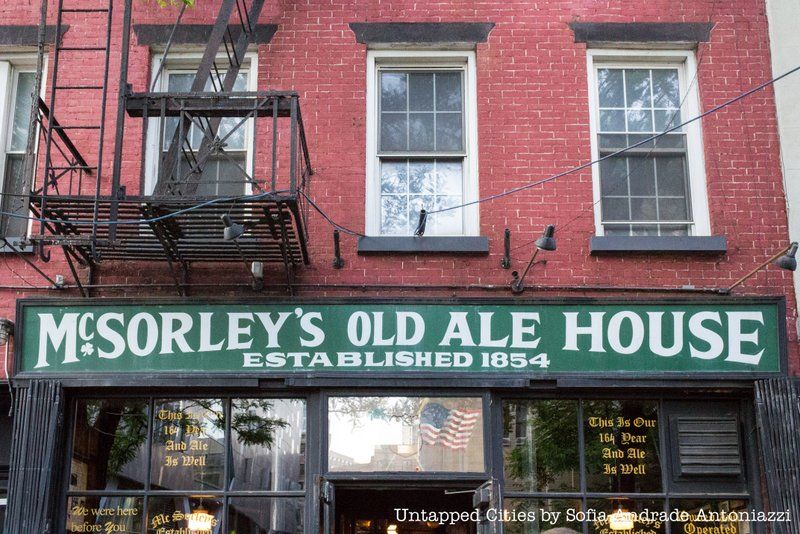
In 1994, The New York Rangers won their first championship in 54 years. To celebrate, the hockey team pulled all kinds of shenanigans, including filling the Stanley Cup with McSorley’s Ale, locking themselves in the pub for 45 minutes and drinking it all. Team members also used the cup to feed a Kentucky derby horse, got a bit too drunk, and left the cup at a strip club. The debauchery of the New York Rangers caused the NHL Hall of Fame to tighten the rules on where the Cup can go, giving rise to an explicit ban on casinos and strip clubs.

In 1964, after playing Madison Square Garden, the Pelvis came to the old Irish pub for a round. The tale is that Presley had a bit much to drink, and by the light of the coal stove, gave an impromptu performance while standing at a table. Mattie Maher, who has owned the pub since 1977, euphemistically said that Presley had been “overserved” that evening. In addition to Presley, other musicians who enjoyed the bar were Frank Sinatra and the rat pack, Woodie Guthrie and John Lennon.
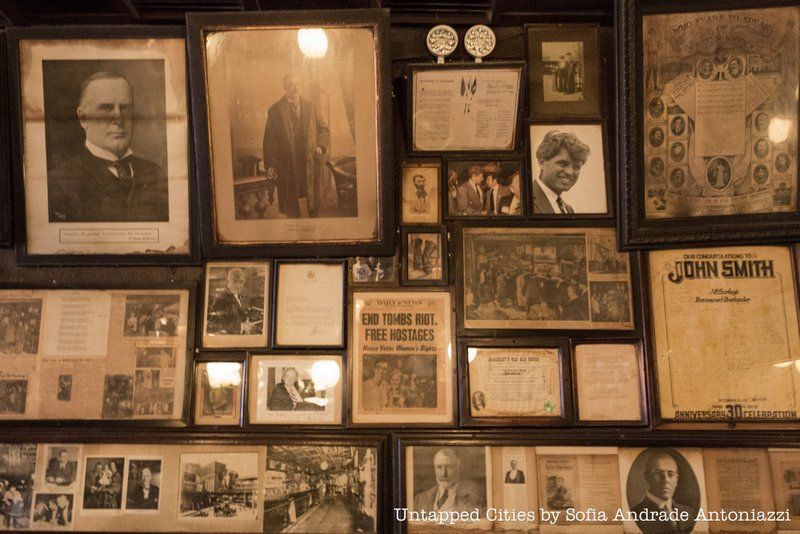
Add to the list of famous patrons: Abraham Lincoln. Before becoming the president of the United States, Lincoln gave his famous Cooper Union address at the university and reportedly stopped by McSorley’s while in town. Another tie to Lincoln is the bar’s original 1865 “Wanted” poster, offering a $100,000 reward for the capture of his assassin, John Wilkes Booth!
Of course, Lincoln wasn’t the only president to have ale at McSorley’s. Theodore Roosevelt and John F. Kennedy enjoyed a few drinks at the bar as well. American industrialist and inventor, Peter Cooper, who founded Cooper Union, was also a regular — so much so that his portrait still hangs in the pub, along with the chair he regularly sat at.
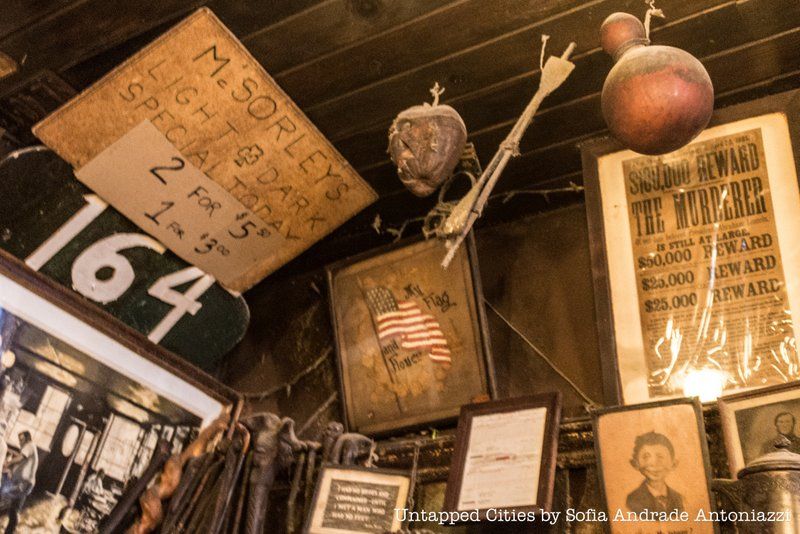
The 1863 Draft Riots rocked Manhattan, giving rise to the worst series of street riots in American history. The riots were racially charged: many young Irish immigrants argued against abolition as they would then be competing for working class jobs with freed slaves. To take back control of the city, President Abraham Lincoln had to send in militia and volunteer groups, which where diverted after the Battle of Gettysburg. The Fighting 69th Infantry used McSorley’s as their headquarters throughout this week of disturbances.
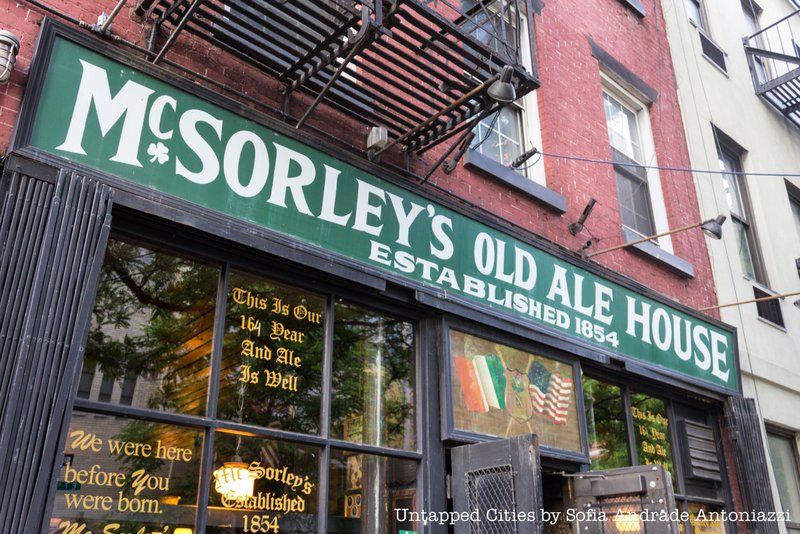
E.E. Cummings wrote the fantastic poem “i was sitting in mcsorley’s,” which paints a picture of the East Village institution where he frequently drank. Some choice lines are “outside it was New York and beautifully snowing. Inside snug and evil” and “I was sitting in the din thinking drinking the ale, which never lets you grow old.”
E.E. Cummings wasn’t the only poet who loved the pub. Other writers who drank at McSorley’s include Welsh poet, Dylan Thomas, and American journalist and author, Hunter S. Thompson, both notorious drinkers.
Next, check out some of the oldest bars in New York City, as well as hidden ones.
Subscribe to our newsletter